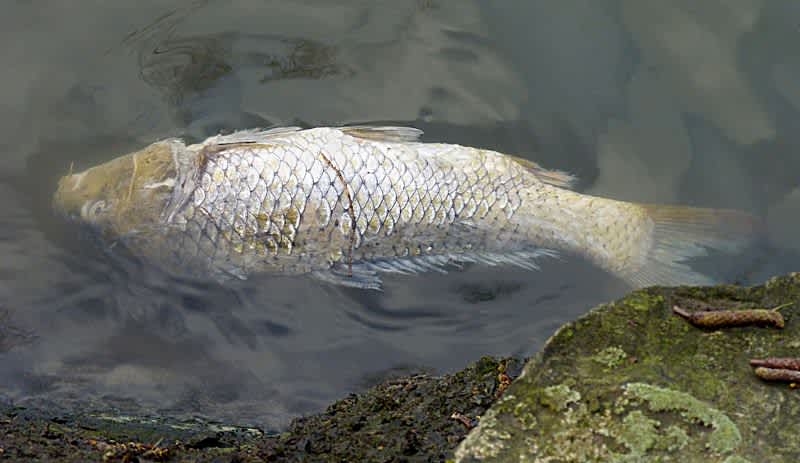Virus Suspected Behind Dead Carp in North Dakota
OutdoorHub Reporters 06.05.13

Carp have been dying in droves in the waters of Jamestown Dam, and biologists suspect that a foreign virus may be the culprit. The problem first surfaced in early May when anglers noticed that the area’s carp, predominantly the invasive common carp, began acting strangely. The fish did not evade anglers as they are normally prone to and sometimes stayed still enough to be touched or poked with the tip of a fishing rod. According to The Jamestown Sun, hundreds of carp have surfaced dead.
Gene van Eeckhout of the state’s Game and Fish Department believe the fish are suffering from spring viremia of carp, a virus that primarily affects common carp and related species such as Koi. University of Florida research shows that the virus is common in Europe and Asia, and was found in the United States for the first time in 2002. The virus seems to cause behavioral changes in the affected fish, which can become lethargic and unbalanced. Captive carp afflicted with this virus have been seen laying on the bottom of tanks, unable to swim for long periods of time. Eventually, spring viremia leads to death.
“What we’re seeing is a classic chronic disease,” said van Eeckhout. “How it got here or into the wild population is unknown.”
The common carp is considered to be under the umbrella of a group of invasive fish collectively called “Asian carp.” Asian carp were introduced to American waters in the late 60s and early 70s, subsequently escaping into the wild and colonizing nearby rivers. In time, Asian carp became an ever increasingly threat to the nation’s native species. Individual states have dedicated immense resources to eradicating the fish, including traditional methods of fish kill and setting electric barriers to prevent the species from invading vulnerable waters such as the Great Lakes. Many might wonder why wildlife officials are not using viral methods of decreasing carp populations.
Recently a similar disease targeted carp in Arizona. The Koi Herpes Virus was deadly to most carp species and affected thousands of fish in Lake Mohave. KSL reports that experts in nearby Utah considered and decided against importing the virus to its own carp-infested lakes.
“We’re just reluctant to bring in a disease when we can’t control it and we don’t know (everything) about it,” said Reed Harris, director of a project to restore an endangered native species, the June sucker.
Another reason was that the virus affected other fish because the thousands of dead carp fouled the water, making it also hazardous to plant and animal life.
Currently North Dakota wildlife officials have no plans to remove the dead carp. For the time being, the dead carp does not to be affecting the environment negatively, lacking the large numbers of Mohave Lake. Visitors to Jamestown Dam are advised to either leave the fish alone or remove the carcass if they wish.

